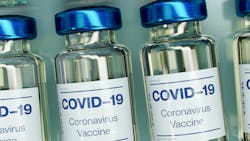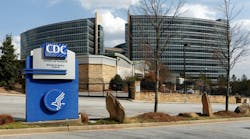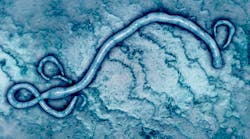While two COVID-19 vaccine candidates seek emergency use approval (EUA) in the coming weeks, U.S. hospitals and health systems are preparing to receive and administer the vaccine to their healthcare workforce and patients, wrote Michael Wascovich, PharmD, MBA, RPh, Vice President, Pharmacy Field Services, Premier Inc., and Erin M. Wright, PharmD, BCPS, Director, Field Pharmacy Services.
However, most do not feel adequately prepared to meet this challenge. On a webinar, Premier polled more than 750 attendees, and nearly 90 percent said that state and federal governments have either “not prepared them” or only “somewhat prepared them” for receiving and managing the vaccine. Another 43 percent cited lack of communication from the government as their biggest readiness gap, followed by lack of storage and administration guidance (33 percent).
To help health systems overcome these gaps, Premier gathered a panel of five pharmacy leaders from health systems across the nation – including Bon Secours Mercy Health (Cincinnati, OH), University of Louisville Health (Louisville, KY), Henry Ford Health System (Detroit, MI), Northwell Health (Manhasset, NY) and Riverside Health System (Newport News, VA) – to discuss their strategies in the COVID-19 vaccine planning process.
What follows are the key takeaways and best practices from the health system panelists on their preparedness efforts, including storage and distribution, administration and documentation considerations.
Storage & Distribution
While McKesson Corporation will serve as the centralized distributor for vaccines* and ancillary supplies, storage and handling pose a significant challenge for the sites that will administer the vaccines given the ultra-cold storage requirements.
Pfizer/BioNTech’s vaccine must be frozen at temperatures of -70° C, with a limited shelf life outside that temperature range, and Moderna’s vaccine at -20° C, more like a regular freezer.
To accommodate these extreme cold conditions, health system leaders discussed investments in at least one large ultra-cold freezer in each of their markets/acute-care sites, as well as the creation of dry ice policies and procedures for storage compliance. Some ancillary supplies, including special gloves, are also a requirement for vaccine removal from freezers.
Given the need to proactively review challenges, select appropriate vaccination sites, and determine storage and transportation capabilities and needs, the panelists emphasized the importance of cross-departmental coordination ─ including supply chain, logistics and leadership teams across acute and ambulatory sites.
In addition, nearly 20 percent of the participants’ organizations have been designated a state hub tasked with distribution to other vaccination facilities within their states. Given this added complexity, some health systems are taking a precise, surgical approach to storage and handling ─ utilizing smart refrigerators to track the location, quantity and temperature data of doses in real-time.
Administration
Pfizer/BioNTech has reported that 50 million vaccine doses will be available initially, with half that amount (25 million doses) available for the United States. And the two-dose requirement for each individual means that up to 12.5 million people can receive a vaccine upon Pfizer’s preliminary rollout. Initial indications point to similar supply levels from Moderna.
At the same time, the nation still awaits final decision from the Centers for Disease Control and Prevention (CDC) about COVID-19 vaccine allocation for priority populations in phase 1A. The most likely group to get the vaccine first is frontline healthcare workers and first responders, followed by high-risk individuals and older adults, including those in long-term and congregate care facilities, and those with multiple comorbidities.
One pharmacy leader talked about the creation of detailed workflows on vaccine administration scheduling based on guidelines set forth in both the CDC’s COVID-19 Vaccination Program Interim Playbook for Jurisdiction Operations, as well as plans put forth by respective state health departments. Another noted the importance of staggered and pre-scheduled appointments for healthcare workers to receive the vaccine to avoid unsafe congregations or lines.
While the federal government will control state distributions, states will allocate for specific jurisdictions ─ likely based on COVID-19 case prevalence, high-risk zip codes and equity, among other factors. As a result, panelists highlighted the importance of vaccination provider coordination with state departments of health in both up-front planning and ongoing vaccine administration efforts.
Another panelist discussed the proactive work hospitals and health systems are taking on to better understand the needs of patient and employee populations, developing risk scores and leveraging robust data to make more educated decisions on prioritization. “Our primary focus now is our employee group and other frontline healthcare workers in the community,” one panelist underscored. “Identifying these individuals and understanding their risk, meaningful patient engagement and determining their amenability to vaccination is key.”
Just-in-time reconstitution will be also be vital, as vials contain five COVID-19 vaccine doses that must be given within a six-hour window. With limited vaccines available in early phases, the panelists collectively stressed the need for continued, detailed planning to administer any and all available doses – and minimize waste.
Documentation
The CDC will be looking closely at proper storage and administration requirements within the appropriate period of time. This will include:
· Temperature requirements
· Reporting data on vaccinations within 24 hours through state IIS systems and to the CDC
· Reporting daily number of doses on hand and administered
· Submitting quarterly attestations that the CDC will provide
· Participation in training program on CDC and ACIP recommendations
For effective documentation and reporting, patients and the vaccine they receive will need to be linked – preferably in an electronic health record (EHR) – and providers will need automated technologies to lighten the load. To that end, one panelist highlighted the importance of a thorough assessment of all IT systems ─ engaging the informatics team weeks in advance to understand limitations and develop a plan to streamline processes. This includes syncing employee health records with reporting as well as a review of key information, such as updated contact information and demographic data, that can be added to providers’ EHR systems ahead of time to speed up throughput.
Panel participants also agreed on the critical nature of second-dose adherence given 95 percent vaccine efficacy is only reached after a patient receives their second dose. Most talked about scheduling the second-dose appointment in real-time during first-dose vaccination as well as strong patient engagement strategies.
“It’s all about how we educate and engage patients,” one panelist said. “In addition to community education and dialogue, we have an existing medical records app to leverage as well as making sure the basic stuff (i.e. email addresses and phone numbers) is up to date when sending out second-dose reminders.”
Another panelist mentioned the federal government-provided COVID-19 vaccine ancillary packs, which include a vaccine card for hard-copy documentation. “It’s important to clearly document the first dose so that the patient knows when to come back for dose no. 2. And if IT systems go down and a patient is scheduled for the second dose, this card is proof to validate second-dose administration.” A good tip: advise patients to take a picture of that card with their phone so they carry around proof of vaccination.





